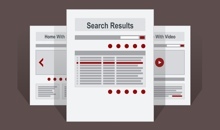During the "Ace The Digital RFP" webinar we discuss the best practices for evaluating marketing technology for a large firm. The rapidly changing digital marketing landscape is the catalyst for this conversation, and it includes the modern wave of smartphone and tablet adoption, the resulting responsive design paradigm and need for enhanced personalization, as well as the overwhelming number of software solutions and technology partners available in the market place. The ideas examined here apply to many evaluation processes, including, but not limited to, app development, website redesign, and CMS. Below are 5 key points from the webinar.
1. Due to the rapidly changing landscape, there is a strong interest in having a long-term relationship with your technology partner. Try to think 5 years out. It's important to get it right the first time so as to reduce the chance for set backs. The RFP is therefore a critical part of the process.
2. The speed of change in technology complexity, web, CMS, Mobile, social media, and marketing technology continues to increase. It's impossible for everyone to keep up all the time. It's best to have a strong focus and level of expertise, so that the client gets the best possible design, tech, and ultimately, the best user experience. Generally speaking, the best agencies are exceptional in either one or the other discipline.
3. The best structure for an internal project team and the decision making process should be committee-based. You can design a committee with administrators, recruiting, business developers, chief administrators ,and heads of practice, office managing partners and different C-level executives. Keep everyone involved with approvals at significant choice intervals like design, navigation, and wire framing. Strong, well-selected committees are critical in professional organizations where dozens, or even hundreds of partners each have a say.
4. To give a prospective tech partner greater context prior to writing the digital RFP, you should document who your audience is, describe their personas, and know where they are located and what level of technology they are comfortable with. Second, find out who will use it, be it a technical content management team, or a communications team, etc. Next, find what level of expertise they have, and how they are organized. Lastly, you should be aware of any and all issues with the current system. Engineering starts with simple input/output; requirements and results. Know what issues you are currently facing and what you want to resolve.
5. Key considerations for a timeline of the proposal process include taking time to analyze the digital landscape, web and digital media trends. This might include interviewing clients and the press to understand their needs, and to understand who your biggest users are. Then, find out who will help you compile your information and present your competitive insight.
There is much more to learn about perfecting your digital RFP. Click here to view the webinar.



